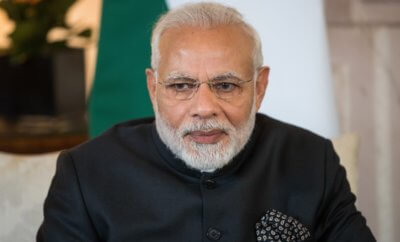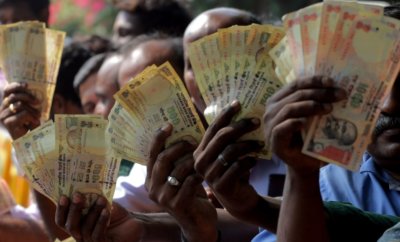Business
The Changing Face of Alcohol Consumption in India

Representational Image
Photo: Bigstock
From locally brewed wines to craft beer, the alcohol consumer in India now seems spoilt for choice.
The growing clamor for prohibition from some Indian states, the recent government policies like the ban on sale of alcohol on national highways, and the still widely prevalent belief of the pub culture being “anti-Indian” are not deterring Indians from guzzling their pick of favorite alcohol like never before.
It is no wonder then that the alcohol industry, segmented largely into wine, beer, imported alcohol, IMFL (India-made foreign liquor) and IMIL (India-made Indian liquor), is booming in the country. Many factors have contributed to this increase, including an improvement in living standards, globalization, increased exposure to different lifestyles and, perhaps most significantly, the increasingly relaxed social norms.
The technology boom in cities such as Hyderabad and Bengaluru has contributed to higher disposable income for the youth, which is often tied to an increase in alcohol consumption.
Magandeep Singh, the author of The Indian Spirit: The Untold Story of Drinking in India, feels that the reason for this rise in consumption is largely twofold — awareness and availability. “Be it education, jobs or holidays, more Indians are frequenting foreign shores and this prolonged exposure gives them more tactile contact with the beverage. Its availability certainly makes its access easier,” says the certified sommelier, who fell in love with wines while working in France.

Magandeep Singh
The increase in consumption has been aptly matched by an increase in the number of alcohol manufacturers. While it was always produced on a large scale in India, most of it was restricted to low-quality toddy. However, as the taste for alcohol is getting more refined, it’s making the Indian manufactures sit up and take notice of the trend.
“Duties and levies notwithstanding, alcohol consumption has always been on the rise in India, but more pertinently, the quality of what Indians are imbibing is rising exponentially and that is a positive trend,” Singh points out.
Manufacturers are also endeavoring to up the quotient by bettering the product locally as well. “We are consistently churning out more products that can compete internationally,” Singh adds.
A fifth of alcohol produced in the world is consumed by Indians, making the country the largest whisky market in the world. The whiskey market is growing by 30 percent year on year, according to the Associated Chambers of Commerce and Industry in India.
India-made single malts such as the Bengaluru-based Amrut and Goa-based Paul John have gained significant international appreciation. Paul John was rated “Liquid Gold” by the Whisky Bible in 2013. A few years earlier, the same institution gave Amrut the ranking of being the third best whiskey in the world.
What has worked in the favor of these producers are climatic conditions in India. It is hard to dismiss the maturation advantages of brewing whiskey in tropical climes. Whiskey barreled in India matures three to five times quicker than that in Japan or Scotland, without compromise on quality. This has not gone unnoticed by the big players, who have been quick to spot the huge potential in the industry.
In a first for a multinational alcohol company, the Indian subsidiary of the $11 billion French firm Pernod Richard will be taking three Indian whiskies — Royal Stag, Imperial Blue and Blenders Pride — global.
About 30 per cent of Indians consume alcohol, out of which 4 to 13 per cent are daily consumers, according to the World Health Organization. With the minimum drinking age varying from 18 to 25 years across states, India had approximately 485 million people of legal drinking age in 2013. This is more than the population of the United States and Mexico combined. Another 150 million have been predicted to join this group by 2018.
And this is despite government policies that are seen as hostile towards alcohol consumption by many. The highway ban resulted in a huge slump as hundreds of bars across the country closed doors. The ban was soon lifted for all municipal areas in the country, but prohibition continues to be in force in states like Gujarat and Bihar, where the belief that alcohol-tinged lives are rife with debauchery and decadence hold ground.

Bira beer
The number of alcohol consumers, however, remains on the rise. And with that comes varying tastes. Another spirit that has shown a marked increase in consumption and international presence is the Indian beer. According to market research firm Euromonitor International, factors like an increase in disposable income, a growing culture of social drinking and a greater awareness of health issues related to drinking hard liquor are driving many to opt for beer.
The trend is hard to miss given the increasing number of microbreweries, a reflection of the surge in demand for craft beer. In addition, many stay away from hard liquor during the day, but beer is viewed as a light drink, safe to drink in the afternoon or early evening after work hours. The fact that it is also relatively inexpensive, and one can indulge in more drinks without hurting the wallet or the kidneys too much works perhaps as a bonus.
Naveen Raju, the Executive Director at Chancery Hotels in Bengaluru, has noticed a large increase in the consumption of beer, as compared to other alcohol. “Beer consumption in India is at around 8 per cent, while the international average stands at 25 per cent. Interest in beer is growing at an exponential rate. There is huge scope for growth, especially in the craft beer section, which is fresh and more experimental. What works for craft beer is that bottled beer carries taxes, while craft beer is brewed and served on the premises, and thus subject to lower taxation,” says Raju.
Despite the emergence of craft beer, the king of good times, Kingfisher, still reigns supreme. It is also the most exported beer brand, with a great lead over other brands like Haywards 5000.
Bira, relatively new to the game, is fast gaining traction too, both within the country and internationally. “As demand for beer increases, a corresponding increase in the production of barley, malt and hops, which are currently imported, will be greatly beneficial,” adds Raju.
Around the turn of the century, as drinking became more and more socially acceptable, the market for another alcohol — wine — opened up.
Although lagging behind whiskey, wine drinking has increased substantially in India. Clubs like the Indian Wine Club have played a significant role in promoting the drinking of wine as a lifestyle drink and touted its health benefits. Subhash Arora, the founder of the Indian Wine Club, has borne witness to the growth of the wine culture in India.

Sula Wine barrels
“Prior to 2000 wine was not easily available,” he says. “Brands like Sula and Grover had recently emerged, and imports were allowed only in 2001. However, import duties have always been high, and a bottle of Californian wine which retails for around 5 dollars in the United States, sells for triple that in India.”
With grape-growing conditions being favorable in certain parts of the country, more specifically Karnataka, Maharashtra and Himachal Pradesh, it made sense for Indian players to exploit this growing demand.
Does Indian wine compare favorably with wine grown abroad? Arora thinks so. “Indian wine has vastly improved in quality in the last five years, thanks to improved technology, education, know-how, and the passion of the wine growers themselves. Smaller wineries like Krsma and York are now producing excellent wine. And the quality is only going to improve,” adds Arora. He is confident that within the next 20-30 years, India will be a wine-producing superpower, and government policies will gradually change to enable this growth.




1 Comment